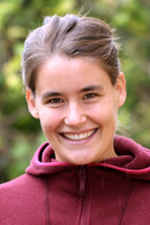Maria Rugenstein receives NASA New Investigator grant
Assistant Professor Maria Rugenstein has been selected to receive a NASA grant to support her early-career research. Her project is among the 38 NASA will fund through its New Investigator Program in Earth Science, out of 238 submitted.
Rugenstein will use her grant to study a key element for predicting climate change. She will examine how radiative feedbacks might change in time. Radiative feedbacks are processes that balance excess heat in the atmosphere.
Recently, scientists have found that radiative feedbacks depend on surface temperature patterns and are not constant in time as assumed for several decades. While this “pattern effect” has been simulated and understood in climate models, it has not been observed in the real world – mostly because radiative feedbacks are hard to quantify. To do so requires accurate long-term observations of both sea surface temperature patterns and top-of-the-atmosphere radiative imbalance, the difference between solar energy absorbed by Earth and the amount radiated back to space.
Rugenstein will use the 20-year record of NASA’s radiation measurements to compare observations to climate models.
“The observational record is likely too short to detect the effect, but we will try hard to detect it,” Rugenstein said. “The idea is to compare observations and climate models on equal footing by accurately sampling the internal variability of climate models. One major problem is that we do not know how small errors in the models’ ocean-atmosphere interaction might influence the top-of-the-atmosphere radiation.”
A better understanding of the interaction between surface temperature and the top-of-atmosphere radiative imbalance in the observations will help us improve climate models, understand their limits and ideally constrain projections of climate change into the future.
Rugenstein, who joined CSU’s faculty last year from the Max Planck Institute in Germany, is excited to work with NASA and satellite data on her first U.S. grant.



